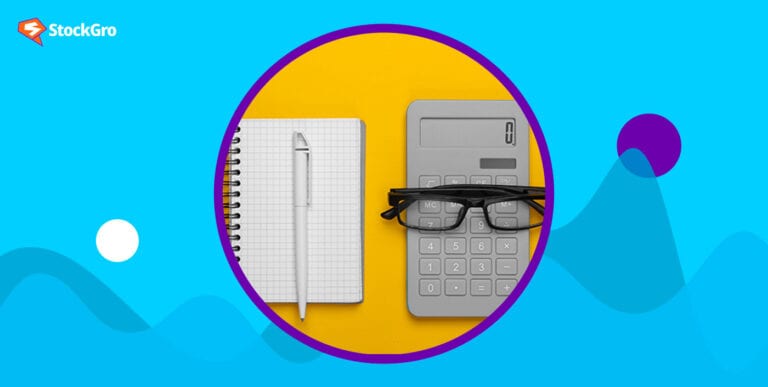
Imagine living in a world where the language of money is spoken fluently, yet you find yourself needing help understanding the basics. Many underserved communities, where lack of knowledge about personal finance is common, face this reality. For what reason, though, should we be concerned?
Financial literacy is one of the main reasons for the growth of an economy. If a majority of the population of a nation isn’t able to manage money properly, it becomes a drawback for the GDP growth of the country. Let’s investigate this critical issue further and see if we can find a way to help underprivileged communities overcome financial illiteracy.
Understanding financial illiteracy
Financial illiteracy is a lack of knowledge or skill in handling money. It means naively dealing with money, not knowing how to save, invest, or create a budget. To be financially literate means understanding the power of money and how it can be harnessed to improve your life. It can assist in making informed decisions that can shape a fulfilling financial future.
However, a person’s ability to manage their money goes beyond the ability to balance a cheque book. The key is learning the ins and outs of money and how to use it to good use. The focus is on fostering economic empowerment and opening doors to greater growth and prosperity.
Now, let’s use some figures to illustrate this. Research shows that many people around the world are clueless when it comes to money. S&P found that over 75% of Indian adults lack a solid grasp of money management fundamentals. This issue is magnified in underserved areas, where there is a large financial knowledge gap and significant socioeconomic disparities.
However, what causes this disparity? Many factors contribute to this problem, from structural issues that maintain socioeconomic inequality to a lack of access to quality financial education.
Consequences of financial illiteracy
Financial illiteracy can have far-reaching consequences, not just for individuals but also for the communities they live in.
Poor money management due to ignorance of personal finance can cause problems like excessive debt, insufficient retirement savings, and even insolvency on an individual level.
Take the example of a young adult who was never given the right financial education. They may spend on impulse, rack up credit card debt, and not have any money saved for emergencies if they don’t know about compound interest and the significance of saving. It has an impact on their ability to save for the future and on their ability to do things like buy a house or start a business.
Economic empowerment and socioeconomic disparities can be worsened at the community level by widespread financial illiteracy. Without knowledge of personal finance, it is much more difficult for underprivileged communities to escape the vicious cycle of poverty and unemployment that they face.
However, financial inclusion efforts can significantly contribute to reducing the negative effects of these factors. People can build stronger, more resilient communities with access to financial education and services, which allow them to make educated decisions about their money.
Also read:Unlocking prosperity: The transformative power of financial literacy
Barriers to financial literacy in underserved communities
Underprivileged communities often face unique challenges in achieving financial literacy. These barriers can hinder their path to economic empowerment. Some of these barriers are:
- Lack of quality financial education: Comprehensive and easily accessible financial education is out of reach for many underprivileged communities. There is a high likelihood that schools in these regions do not have the resources to provide specialised financial education programmes. Due to limited education access, people may not be well-equipped to handle their finances wisely.
- Language barriers: It can be even more challenging for individuals to understand complex financial concepts if they are not taught in a language they can relate to. Communities where many do not speak English as their first language or where multiple languages are spoken should pay special attention.
- Lack of trust in financial institutions: People in underprivileged areas may not have faith in banks and other types of financial organisations. People may be reluctant to use these services because they have a history of negative experiences, such as discrimination or exploitation.
- Digital divide: The growing digitisation of financial services might be a problem for people without access to computers or the internet. Due to this digital divide, people may be unable to take advantage of digital financial services or learn about personal finance online.
- Systemic issues: Income disparity, racial disparities, and gender biases are some systemic issues that can exacerbate financial illiteracy. These systemic barriers can hinder financial education and economic advancement.
Efforts to improve financial literacy
Numerous organisations along with various government departments are working tirelessly worldwide to bridge the wealth divide and improve financial literacy in underserved communities. These initiatives come in all sizes and scopes, from neighbourhood programmes to national campaigns, each with its unique approach and set of challenges.
Financial education programs are among the most prevalent initiatives. One primary goal of these programmes is to improve people’s money management ability. They cover everything from creating a simple budget to investing and preparing for retirement.
Moreover, budgeting workshops are frequently held to help people understand how to divide their income and save some for the future. For instance, budgeting is a crucial part of the Financial Education Programme for Adults (FEPA) offered by the National Centre for Financial Education (NCFE).
Numerous online and offline financial literacy resources are available in addition to these. Books, websites, apps, and even games designed to make learning about money easier and more interesting are included in this collection.
However, there is a massive mountain to conquer. Only about 1% of the Indian population owns around 40.5% of the total wealth of the country, which only leaves 59.5% with the remaining 99% of the natives of India. There is an alarming amount of difference between the number and being financially literate can bridge the wealth divide.
Efforts to reduce inequality in wealth and provide opportunities for the poor must, therefore, continue indefinitely. These initiatives can help the Indian people become more financially literate and self-sufficient.
Also read: Empowering India: A deep dive into the 4 components of financial literacy
Proposed solutions for tackling financial illiteracy
It will take a lot of work to combat financial illiteracy, but we can succeed if we all pull together and take smart steps. Improved community outreach is one of the main tactics. To do this, we must go to the core of neglected communities, learn about their specific financial struggles, and then design financial education programmes to address those needs.
Financial skills training is another important factor. The goal here is to provide people with the tools they need to succeed in all aspects of personal finance, not just saving and budgeting but also understanding and dealing with debt, saving for retirement, and filing taxes. Doing so will enable people to take charge of their financial well-being by allowing them to make educated decisions.
The effectiveness of financial literacy campaigns should also be considered. These campaigns can make a big difference by spreading the word about how important financial literacy is and the resources available to help.
While these solutions are not exhaustive, they represent promising poverty alleviation strategies in underserved communities. It’s a difficult road, but with perseverance, we can close the financial literacy gap, build financial resilience in these communities, and set them up for a better financial future.
Also read: Deciphering the numbers: Insights into the financial literacy rate in India
Bottomline
Financial literacy advocacy is more than a cause, it’s a catalyst for change. It’s about empowering low-income families, bridging the wealth divide, and giving a voice to and empowering marginalised groups. It’s about transforming lives, one financial decision at a time.
Together, we can turn financial literacy into a tool for empowerment and a stepping stone to a more equitable future.

